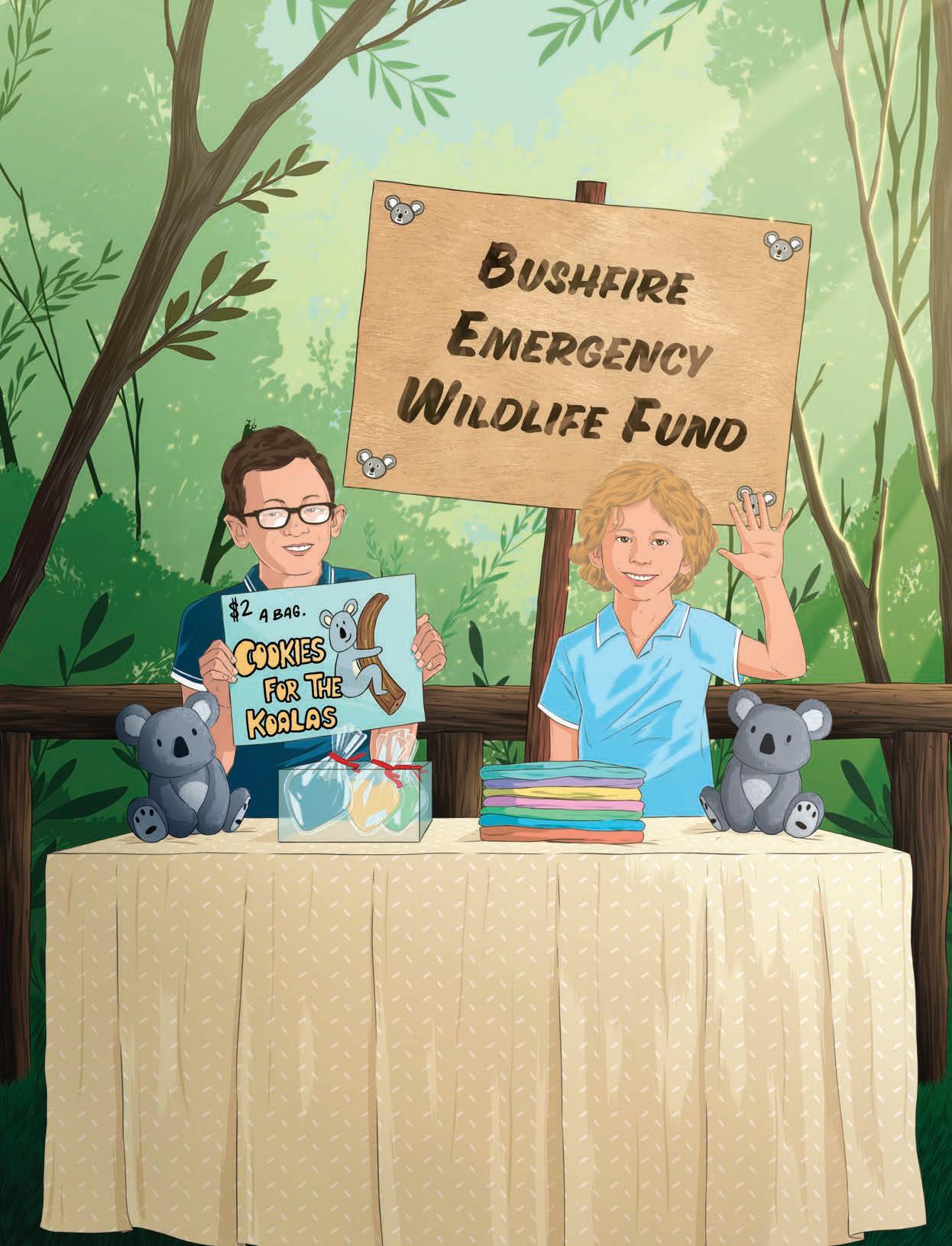
12 minute read
After the fires
The balm this country needed after the summer bushfires came in the tidal wave of support for Australia’s precious wildlife. Now, the work to regenerate and rebuild continues.
WORDS Steve Colquhoun ILLUSTRATION Phil Constantinesco
Heartbreaking images of native animals in distress dominated our television screens last summer as catastrophic bushfires engulfed the east coast of Australia.
As saturation coverage of the devastation featured on news bulletins around the globe, offers of assistance began to pour in. That meant veterinarian teams, keepers, managers and scientists from frontline organisations such as Zoos Victoria could call upon every available resource to protect imperilled wildlife, including critically endangered species whose habitats were directly in the paths of fires. Zoos Victoria staff were heartened as donations arrived from all over the world.
“Initially, we didn’t put a call out for support,” recalls Jodie Odgers, Philanthropy Grants Manager at Zoos Victoria. “In January, we established the Bushfire Emergency Wildlife Fund, and people saw that as an opportunity to give and make a difference.”
In the local community, children sold cookies in the streets and adults held fundraising dinner parties; around the world, zoos mobilised with offers of assistance; and corporate organisations both here and abroad gave generous financial assistance. A Thai pop singer who grew up in Australia, Palitchoke Ayanaputra, even lobbied his fan base to raise funds, which were sent to several Australian
Right The community response to the bushfires was truly heart-warming, including large gifts, raffles, trivia nights and bake stalls.
BUSHFIRE EMERGENCY WILDLIFE FUND DONATIONS (at 30 June, 2020)
New Supporters
$4,009,194.50
International zoos
$1,192,816.50
Current Supporters
$1,079,958
Victorian State Government
$732,094
Corporate Supporters
$693,966
Australian Government
$500,000 of a $1 million commitment
Members
$233,244
Trusts and Foundations
$440,000
TOTAL $8,881,273
(as at 30 June 2020)
TOTAL NUMBER OF DONORS: 34,847
organisations involved in bushfire relief, including Zoos Victoria.
“You’d get to work and open up your emails and there would be an email from someone at a zoo on the other side of the world saying, ‘Hi, just letting you know that we are raising money for you’. That sort of thing. People just took action and then let us know,” Jodie says.
Why were people motivated to give so generously? “I think it was because the wildlife didn’t have a voice and we were seeing them in an incredibly vulnerable position,” says Jodie. “Some of the images that people saw of wildlife in really heartbreaking situations, you couldn’t watch it and not be moved.”
Yet for every badly burnt koala, terrified kangaroo and injured possum seen in news broadcasts, millions of other native animals and birds were also impacted. Sadly, it’s estimated up to three billion creatures may have perished as their habitats burned during what has been dubbed Australia’s ‘Black Summer’.
In the thick of it was a team of specialists from Zoos Victoria whose ongoing work supporting endangered species made them the logical choice to save critical populations of colonies such as the Brush-tailed Rockwallaby and the Eastern Bristlebird. The work was difficult and expensive — in some cases, involving the temporary relocation of entire populations.
“The main thing is to say a huge thank you to everyone who supported us,” says Dr Marissa Parrott, a reproductive biologist for Zoos Victoria who helped lead an emergency evacuation of critically endangered Brushtailed Rock-wallabies from the Tidbinbilla Nature Reserve.
“Caring for wildlife after fires isn’t a sprint.
Caring for wildlife after fires isn’t a sprint. It really is a marathon.
DR MARISSA PARROT / REPRODUCTIVE BIOLOGIST
It really is a marathon,” says Marissa. “These are species and areas that have been very badly affected by fires and will need help for a long time.”
Planning is already underway for a future in which more fires of greater intensity are a statistical certainty. “This fire has taught us that we need to have everything prepared and ready in the future, in terms of housing, feeding, transport, all those different avenues,” Marissa says.
“The fire fund has particularly helped us to be ready to not only respond to the fire that has just occurred but to ensure that we have everything in place and we’re as prepared as possible, so that we’re ready to help again when we’re needed.”
All donations big and small
Among the thousands of donations received by Zoos Victoria during the bushfire crisis, several notable efforts stand out for Jodie Odgers.
Zoos around the world tend to wrap their arms around each other in times of crisis, and Prague Zoo in the Czech Republic and Cincinnati Zoo in the United States were among those to step up. “The response we received from our zoo family, from all over the world, was incredible,” Jodie says.
Prague Zoo — which houses a permanent exhibit of Australian native fauna including kangaroos, wallaroos, Emus, cassowaries, cockatoos and Tasmanian Devils — not only rallied local support to make a sizeable donation to Zoos Victoria, but also pledged continuing support for two critically endangered species.
“They had an amazing response from the people of the Czech Republic. In addition to their initial gift, they have agreed to continue their support,” Jodie says. For the next two years, Prague Zoo will support Zoos Victoria’s work to protect populations of the Southern Corroboree Frog and the Brush-tailed Rock-wallaby.
In the United States, Cincinnati Zoo’s most famous resident lent her star power to Zoos Victoria’s cause. A local artist created a sketch of Fiona, their much-loved hippopotamus, being hugged by a koala and a kangaroo, which the Cincinnati Zoo screen-printed onto
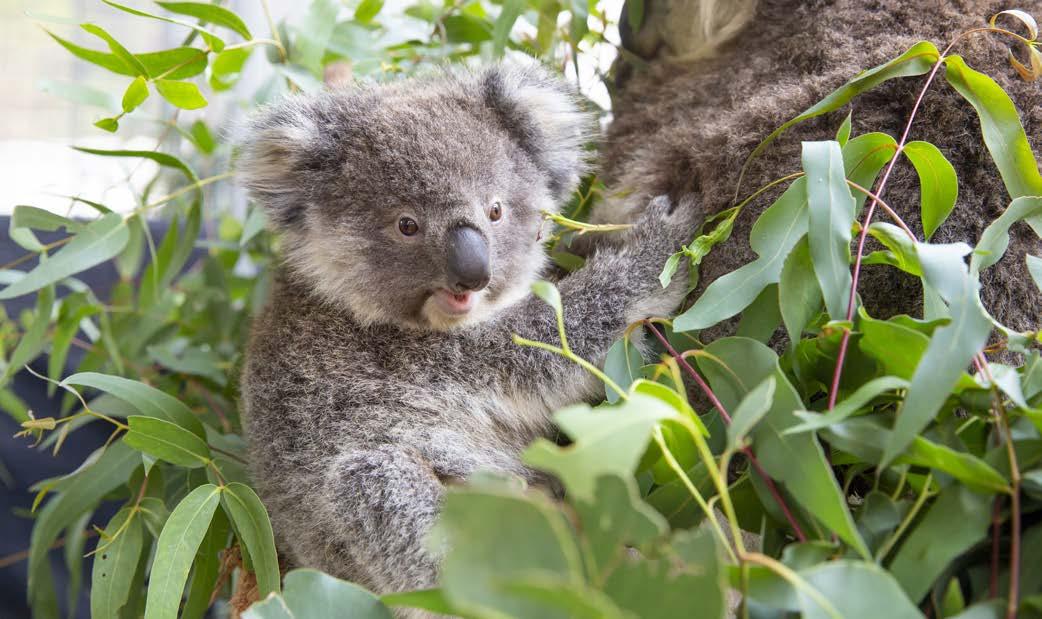
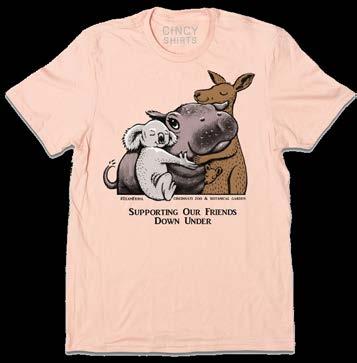
Above Cincinnati Zoo sold screen-printed T-shirts to raise money.
a T-shirt. Proceeds of more than $300,000 (AUD) from sales of the wildly popular T-shirts were donated directly to Zoos Victoria.
Australians, too, were quick to put their hands into their pockets to contribute more than 14,000 separate donations. These ranged from large gifts such as $50,000 from the Bowness Family Foundation — which has previously donated $1 million to Zoos Victoria’s Endowment Fund — to the proceeds of raffles, trivia nights and community bake stalls.
In Lara, Zoos Victoria member Ashlee Cauberg and her children Scarlett and Jaxon, along with 20 of their friends, raised more than $1,500 by selling cakes and doughnuts outside their local supermarket.
“It was an emotional rollercoaster at the time but going to work every day and seeing and hearing about what people were doing to support our efforts was so inspiring,” says Jodie. “We had businesses that were giving us $2 from every cup of coffee they sold, or people were having picnics in the park and doing fundraisers that way. We had people who were auctioning items off. The breadth of it was something we’ve never seen before.
“I think one of my favourites, though, was two little boys called Harrison and Xavier. They wanted to do something special to help the injured koalas. With the help of their mum the boys set up a stall out the front of their local coffee shop to sell Anzac biscuits. The boys sold over 200 biscuits in 45 minutes. One woman who walked past and saw what they were doing gave them a couple of hundred dollars to support their effort. And you just think ‘that’s amazing’.
Corporate caring
The devastation wrought on animals and their habitats tugged at heartstrings, but also opened purse strings across corporate
STEPHANIE PALAYAN / SENIOR BRAND MANAGER, MONDELĒZ
Australia. Donations to Zoos Victoria’s Bushfire Emergency Wildlife Fund has raised close to $9 million; this included almost $700,000 from 78 Australian companies.
The largest single corporate donation came from snack-food maker Mondelēz International, which pledged $252,000.
Zoos Victoria General Manager of Philanthropy, Angie Retallack, says such generosity made a huge difference as zoo staff worked to rehabilitate affected animals and habitats.
“The support from Mondelēz has had a positive impact on our ability to provide urgent care to injured wildlife – and as we move into the recovery phase,” Angie says.
It’s not the first time Mondelēz has opened its cheque book in support of Zoos Victoria. The latest donation adds to a $460,000 pledge over three years to support breeding, research and conservation projects for a number of endangered frog species until 2023. One of Mondelēz’s most famous brands is Cadbury, the maker of wildlifeinspired chocolate treats including Freddo Frog, Caramello Koala and Furry Friends.
“Freddo has been very proud to support his frog friends,” says Stephanie Palayan, Senior Brand Manager, Mondelēz Australia.
“We’re very proud of the long-term commitment we have made to the zoo, so when the bushfires happened, we felt compelled to make an extra contribution.”
THANKS FOR YOUR GENEROSITY
The massive effort to recover from the bushfire emergency is ongoing.
Donate to Zoos Victoria’s Bushfire
Emergency Wildlife Fund at
zoo.org.au/fire-fund
Moving forward after the bushfires
Out of harm’s way
THE EASTERN BRISTLEBIRD
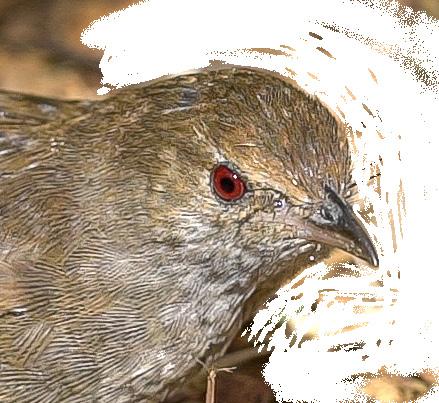

Few locations in Australia would be more remote or inaccessible than Cape Howe, the home of a small colony of the endangered Eastern Bristlebird. That proved no impediment to a fierce fire that tore through southern NSW, wiping out about half of the bristlebird population that straddles the border. Such remoteness was also an imposing barrier to a hastily organised team of ornithologists sent to evacuate an ‘insurance population’ of the birds. With fire threatening to swamp the remainder of the habitat, flying into the site on an Australian Defence Force Chinook helicopter was the only option for rescuers, says Zoos Victoria’s Senior Threatened Species Biologist Dr Kat Selwood. “We knew we couldn’t save all of them, and we were really worried about losing the entire population,” Dr Selwood says. Lightweight nets were used to capture 15 of the birds. They were transferred onto a waiting boat to sail to Mallacoota, where they were loaded onto a plane and flown to Melbourne. Arriving at Melbourne Zoo, they took up temporary residence in specially prepared aviaries.
THE BRUSH-TAILED
ROCK-WALLABY
Fire fronts were directly threatening a population of Victoria’s most critically endangered mammal, the Brush-tailed Rock-wallaby, in the Snowy River National Park, and another colony north of the border at Tidbinbilla near Canberra. An evacuation plan was devised for the Snowy River colony but not enacted, as fire skirted the rocky gorges that comprise their habitat. The situation at Tidbinbilla was more dire. Zoos Victoria had been working closely with Tidbinbilla Nature Reserve to support a breeding program and the establishment of a fenced 125-hectare, predator-free habitat for the wallabies. On 2 February, the call was made to evacuate them. The population was rounded up and four important breeding males were sent by road to a pre-prepared enclosure at Healesville Sanctuary. Two wallabies with pre-existing health issues went to Sydney’s Taronga Zoo, while the remaining population of 17 was airlifted via Avalon Airport to Mt Rothwell: a fenced free-range habitat near Little River, on Melbourne’s western outskirts. “It was a huge effort to bring the wallabies in,” says Dr Marissa Parrot, of the hastily convened taskforce.
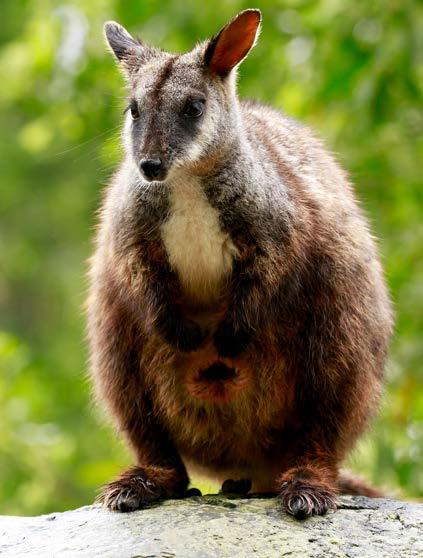
WANT MORE?
See the Eastern Bristlebird evacuation
Watch it here
FINDING HOPE IN HEARTBREAK
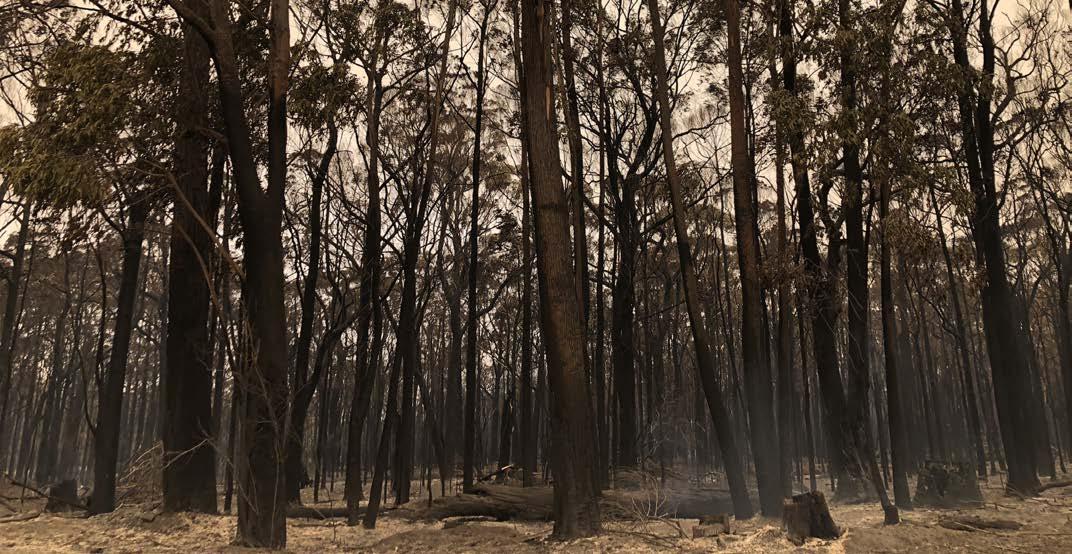
WORDS Gus Goswell, Senior Reporter Melbourne Zoo
Trapped by fire at Mallacoota, huddled with family, eyes stung by smoke, mouth choked with ash, clothes marked by falling embers, my world became very small. The few metres around us, our two-year-old daughter, a pitch-black and then blood-red sky above us. Working on staying calm while trying to prepare for what must be a moment of pure terror.
But somehow, for us at least, that moment never arrived. Some extraordinary skill and bravery from firefighters, and a small wind change, was enough to save us. As the threat passed, my world slowly expanded again, and as it did my understanding of the terrible impact of this fire grew. The houses destroyed, the swathes of bush savaged, the millions of animals killed. By the time I was on a navy ship inching back to Melbourne alongside a blackened, smouldering coastline, I was all too aware of how lucky we had been, and how desperately unfortunate it was for East Gippsland’s wonderful wildlife.
In the weeks that followed, I poured my emotions into my work. I may not have been a vet or vet nurse treating koalas at an emergency triage centre, but I had a role to play. As part of the Zoos Victoria Digital Newsroom it was my role to advocate for wildlife lost in the fires and to empower the media to raise awareness of how these fires had devastated animal as well as human populations.
To be able to work for wildlife after what I had experienced was cathartic in some ways, painful in others, but always intensely meaningful. There seemed to be no end to the thirst for information about the animals we were caring for. And then to see the heartwarming, humbling volume of donations to the Zoos Victoria Bushfire Emergency Wildlife Fund.To know that with such a community of animal lovers standing with us there was so much we could do for wildlife.
Just recently, six months on from the fires, my family and I returned to Mallacoota for a week’s holiday back in our special place. I had been hoping to see signs of recovery, to hear the birdsong, find hope for the future, and in some places, we did find that same beautiful Mallacoota we have known and loved for years. But in other places it was unrecognisable.
There are many difficult years ahead before wildlife is once again able to thrive in these special places. At Zoos Victoria we remain focused on a future rich in wildlife. To every Zoos Victoria member, donor and supporter who has stood with us this year, please know that you have made a difference.

Image: Gus Goswell
Above Gus Goswell captured images after the devastation caused by the bushfires in Mallacoota.






